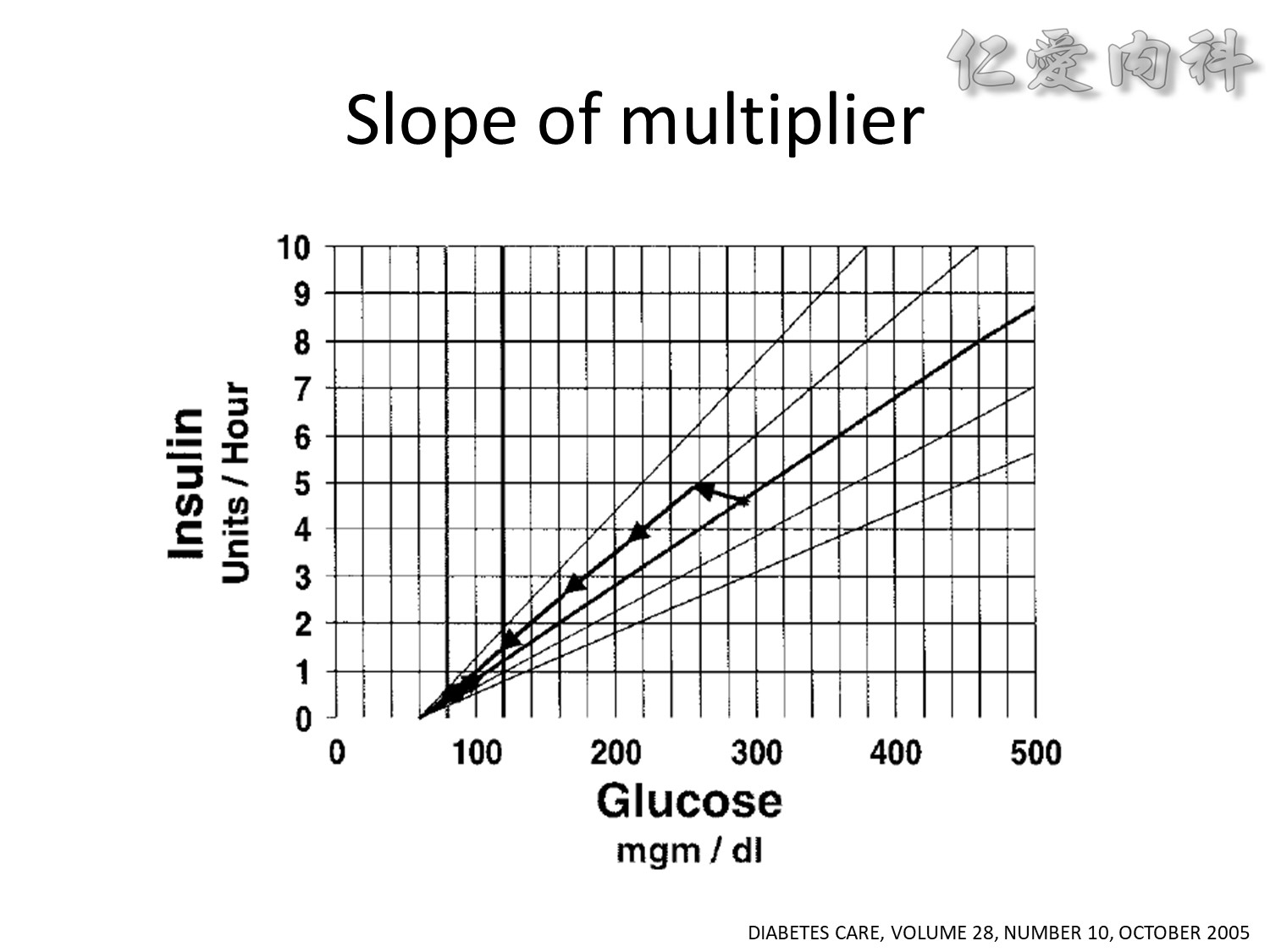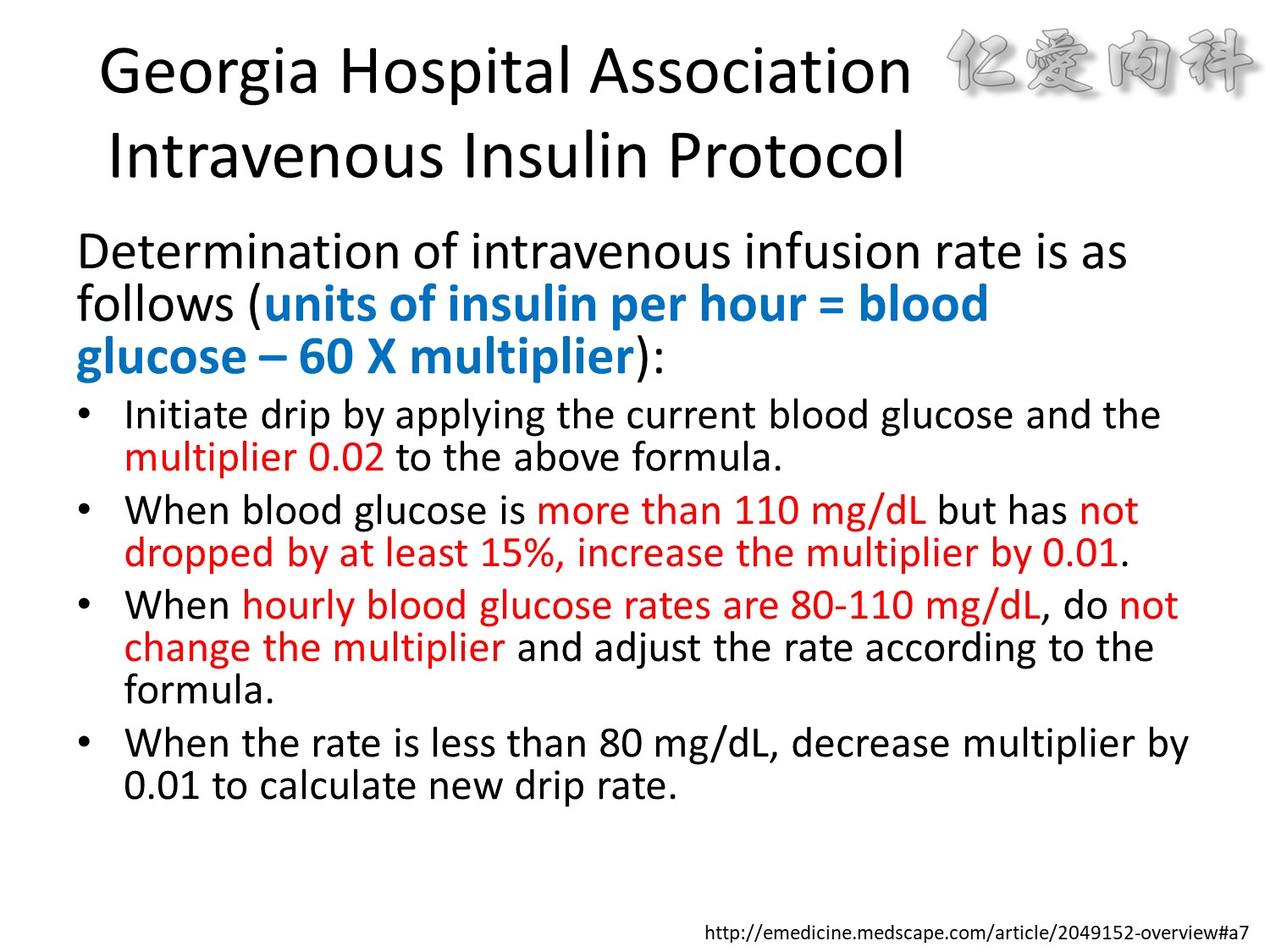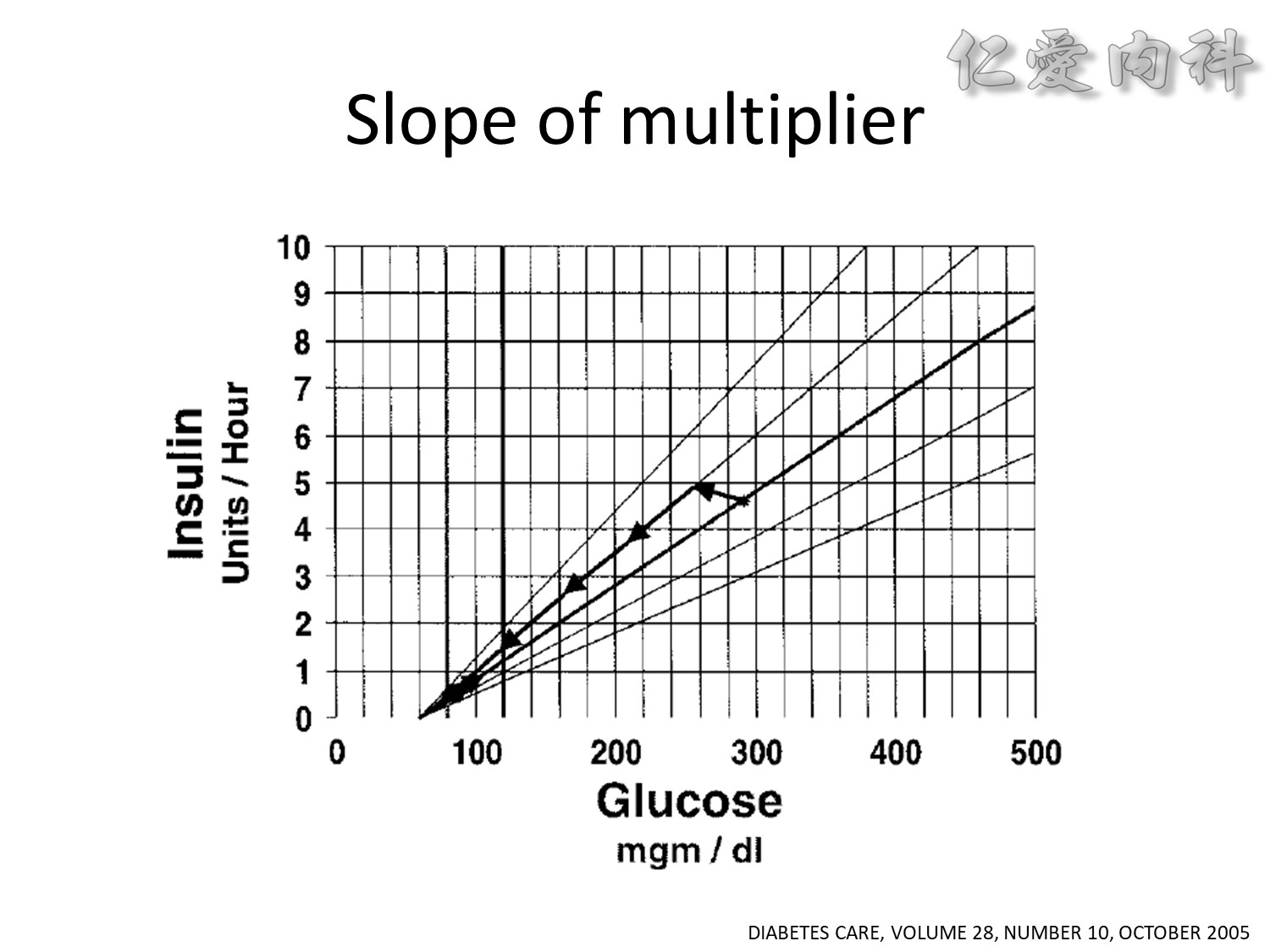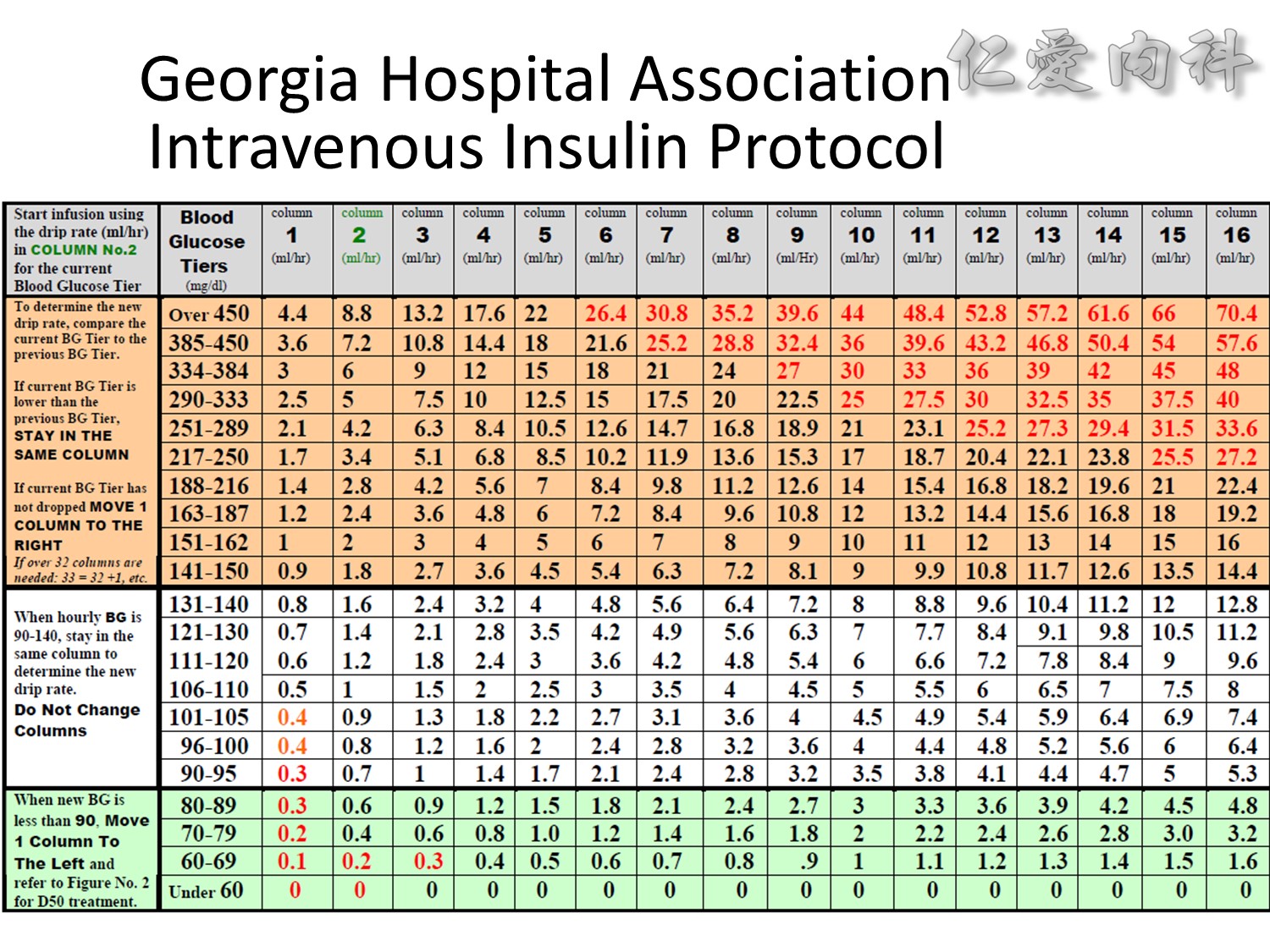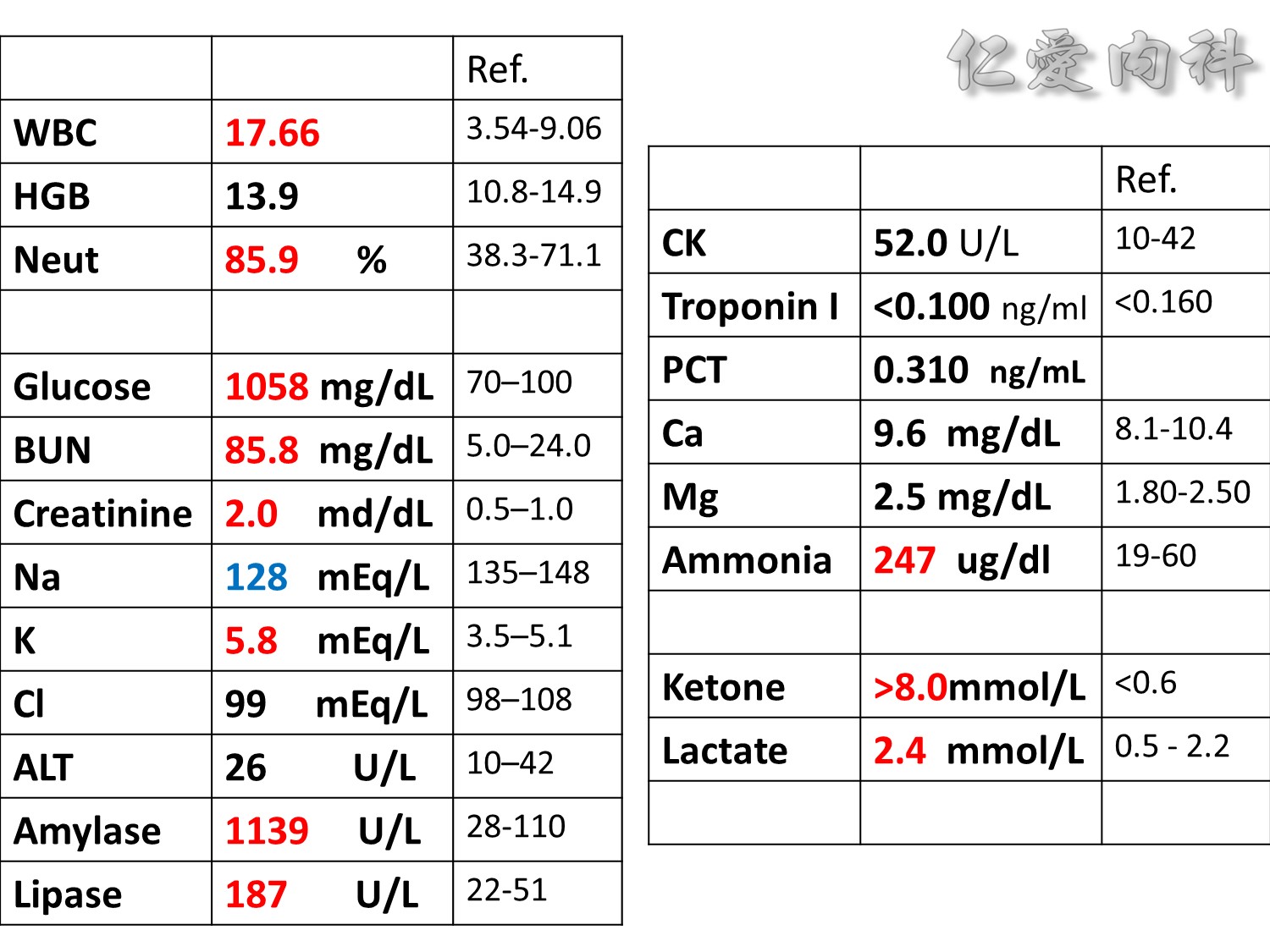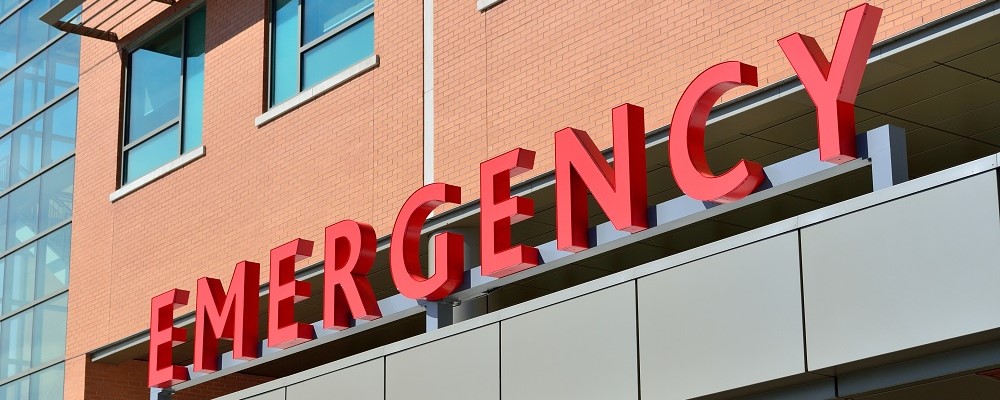
Figure 1—The principles of the Glucommander are illustrated as an array of slopes representing the multipliers. In this example, the initial blood glucose level (295 mg/dl) is plotted on the 0.02 slope, indicating the initial insulin rate (4.7 units/h). The second blood glucose level has only decreased from 295 to 256 mg/dl,15%. Therefore, the multiplier is increased by 25%, increasing the insulin dose to 4.9 units/h. Subsequent serially measured blood glucose levels decrease satisfactorily (205 mg/dl followed by 3.6 units/h, 168 mg/dl followed by 2.7 units/h, and 115 mg/dl followed by 1.5 units/h) until the blood glucose level is less than the low target value (69 mg/dl followed by 0.2 units/h). At that time, the multiplier had shifted downward and the next two blood glucose levels and insulin doses (98 mg/dl followed by 0.8 units/h and 110 mg/dl followed by 1 unit/h) centered in the target range.
This has also been referred to as the Davidson or Glucommander Protocol. The intravenous infusion protocol is for a target of 140-180 mg/dL.Initial orders are as follows:
Discontinue previous diabetes medications.Obtain basic metabolic profile (repeat in 6 h and then daily) Record intravenous fluid (ie, normal saline, dextrose 5% in 1/2 normal saline, dextrose 5% in 1/2 normal saline/20 meq K+). If the patient is NPO and is not receiving total parenteral nutrition or continuous enteral feedings and has a blood glucose level of less than 250 mg/dL, the intravenous fluid selected and the rate of infusion should have a glucose source of 5 g/h or more.
Intravenous insulin administration is as follows:Mix 250 units of regular human insulin in 250 mL of normal saline (1 U/mL).Flush approximately 30 mL through the line prior to administration.Do not use a filter or filtered set with insulin.
Piggyback the insulin drip into intravenous fluid using an intravenous infusion pump with a capability of 0.1 mL/h.Initiate the intravenous insulin flow sheet.
Blood glucose testing is as follows:Check blood glucose levels initially and then every hour using a finger stick (hospital-certified meter).Do not alternate sites without physician approval.
After hourly readings remain in the desired range for 4 consecutive readings, testing can be reduced to every 2 hours.
The laboratory must verify as soon as possible all blood glucose readings less than 40 or more than 500.
Determination of intravenous infusion rate is as follows (units of insulin per hour = blood glucose – 60 X multiplier):
Initiate drip by applying the current blood glucose and the multiplier 0.02 to the above formula.
When blood glucose is more than 110 mg/dL but has not dropped by at least 15%, increase the multiplier by 0.01.
When hourly blood glucose rates are 80-110 mg/dL, do not change the multiplier and adjust the rate according to the formula.
When the rate is less than 80 mg/dL, decrease multiplier by 0.01 to calculate new drip rate.
Treatment for hypoglycemia is as follows:
Decrease multiplier by 0.01 as stated above.
Administer D50W by intravenous push.
Recheck blood glucose levels in 15 minutes.
Resume hourly blood glucose monitoring and insulin drip adjustments.
Notify a physician if the following is observed:
Blood glucose level is less than 60 mg/dL for 2 consecutive measurements.
Blood glucose level reverts back to more than 200 mg/dL for 2 consecutive measurements.
Insulin requirements exceed 24 U/h.
The patient’s K+ level drops to less than 4.
Continuous enteral feedings, total parenteral nutrition, or intravenous insulin infusion is stopped or interrupted.
Figure 1—The principles of the Glucommander are illustrated as an array of slopes representing the multipliers. In this example, the initial blood glucose level (295 mg/dl) is plotted on the 0.02 slope, indicating the initial insulin rate (4.7 units/h). The second blood glucose level has only decreased from 295 to 256 mg/dl,15%. Therefore, the multiplier is increased by 25%, increasing the insulin dose to 4.9 units/h. Subsequent serially measured blood glucose levels decrease satisfactorily (205 mg/dl followed by 3.6 units/h, 168 mg/dl followed by 2.7 units/h, and 115 mg/dl followed by 1.5 units/h) until the blood glucose level is less than the low target value (69 mg/dl followed by 0.2 units/h). At that time, the multiplier had shifted downward and the next two blood glucose levels and insulin doses (98 mg/dl followed by 0.8 units/h and 110 mg/dl followed by 1 unit/h) centered in the target range.
Lactate: 1.2
Amonia: 99

